James Cameron is back with Alita: Battle Angel, a pet project he developed for nearly 20 years before handing directing duties to Robert Rodriguez, and in true James Cameron fashion it's more of a proof-of-concept for new technology than a full movie. That leaves us with something which looks breathtaking but also trades in easily understood archetypes, story tropes, and shoehorned romance. More frustratingly, it doesn't even tell a complete story, annoyingly serving to set up as many as 4 sequels.
Two-thirds of the way through, for example, I finally realized we weren't actually going to get to see the giant, shining city in the sky - the same city literally the entire story has been about getting to - and couldn't shake the thought, "Oh, fuck you, movie." It's not that I desperately wanted to see that damn city; it's more reaching the city and taking down its overlord is the story's obvious endpoint. I at least knew the movie would be over once that happened. Realizing such a climax is actually being held back until a hypothetical second or third movie is an incredibly frustrating feeling.
I guess I just don't care about cyberpunk fantasies as much as James Cameron clearly does, and I know I don't have the patience for his new modus operandi where all franchises, Alita and Avatar included, should go on forever.
But, hey, at least Alita's eyes look better than they did in those early trailers. As Cameron's argument for how CGI artists can finally conquer the uncanny valley, Battle Angel is an unquestionable technological triumph. As a film, however, it's predictably in the same conversation with the likes Jupiter Ascending, Valerian and the City of a Thousand Planets, and Mortal Engines (the only one of the bunch I like) as yet another sci-fi epic from a visionary director who seems to only see the world in 1s and 0s now.
It's all Guillermo Del Toro's fault, really.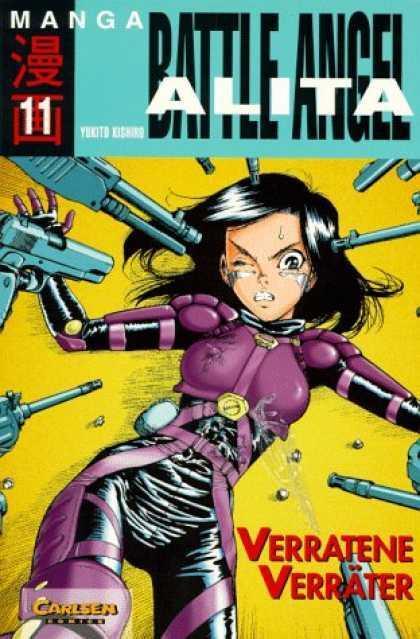
According to Empire Magazine, in the late 1990s, Tel Toro and Cameron were each recovering from particularly grueling film shoots - Mimic and Titanic respectively. They'd become friends by that point, regularly meeting for geek-out sessions to share movies or comic books the other might like. On this particularly fateful meeting, Tel Toro reached into his satchel and pulled out a VHS of a Far East import, an animated adaptation of Yukito Kishiro's manga about a big-eyed girl with no memory and an unbeatable fighting style.
Cameron watched it multiple times, enticed by the simplicity of the story and futuristic world in which people add mechanical body parts and enhancements the way we would normally add rims to a car. (Remember, this is the 90s we're talking about, a time when "cyberpunk" was still a new concept.) "Are you gonna go after this?" Cameron asked of his pal Tel Toro, only to be told, "No, Jaimito. You like it, you do it."
He tried to. Multiple times. However, the technology wasn't there yet and other passions beckoned, such as creating Pandora in a computer or plunging the depths of the ocean floor with 3D cameras like a film director version of Jacques Cousteau. Still, even with all of that Cameron kept coming back to Alita, typing up over 1,000 pages of notes, including several different scripts with Laeta Kalogridis. It was only in 2015 that Cameron realized he'd never have a chance to actually direct an Alita movie of his own, not with the next decade of his life promised to Avatar. So, he finally blinked and turned Alita over to someone else: Robert Rodriguez.
Executing another man's vision.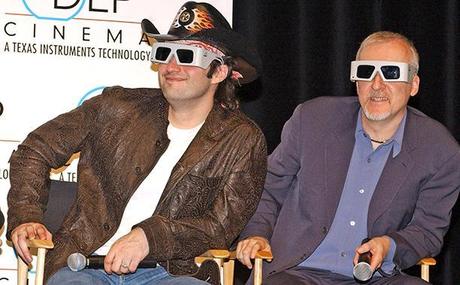
Since this is all started with a famously Mexican-born filmmaker like Del Toro, perhaps it's fitting Cameron's pick for director was Rodriguez, a Texas-based filmmaker with Mexican heritage. This was hardly the first time Cameron and Rodriguez had attempted to collaborate, but nothing had ever come together. In 2015, the timing was finally right: Rodriguez was a year removed from his Sin City sequel and spending most of his time launching/running his own cable network.
The chance to be Cameron's hired gun and bring his vision to screen was too enticing to ignore, especially since for all of the big movies to his name Rodriguez had never come remotely close to playing on a canvas quite as big and with a budget nearly as massive - $200m, by some estimates - as Alita promised. However, by Rodriguez's own admission his work on Alita is more akin to doing a karaoke version of James Cameron.
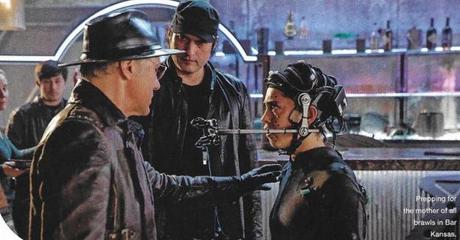
During one far fight scene, for example, he had an idea for a character to use their leg as a gun, but held back because that's not something that would happen in a James Cameron movie. His job wasn't to make a Robert Rodriguez movie but instead to help bring James Cameron's vision to screen.
The Romeo & Juliet draft.The script he inherited is what Cameron calls his Romeo & Juliet draft, the one where Alita, a cyborg, falls in love with a human boy who turns out to be part of a crew which illegally strips cyborgs for parts. To be fair, it starts off great, with Christoph Waltz's Dr. Ido discovering a discarded cyborg in a trash heap and turning her into Alita, naming her after his dead daughter. When she wakes up with no memory, he brings Alita up to speed on the way of things and how there was some great war in the past, now all peoples live together on the surface near the planet's equator, but the elite live above them in a floating city.
Alita takes all of this in like a curious child learning about the facts of life for the first time. This gives her literal wide eyes a nice symbolic quality since she is a girl who could not possibly be more wide-eyed in the way she views the world. An orange is the best food in the world and the consumption of it a moment to be vigorously celebrated.
But if we are witnessing her adolescence period she hits her awkward teen years astonishingly fast. Before we know it, she's gone from hailing chocolate to picking fights with literally anyone who gets in her way, sneaking out to see the city with that cute boy she meets in the street, and railing against her stupid dad for always trying to tell her what to do. Excuse me for thinking, "Didn't you just meet him for the first time like yesterday?"
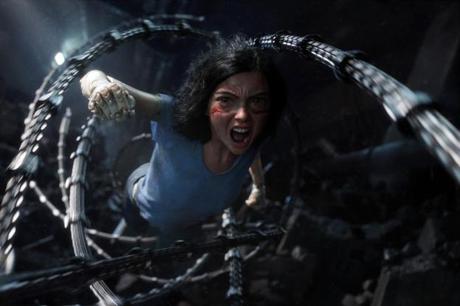
Plus, the movie's universe is so complicated it feels like every time we think the story is about to truly start Christoph Waltz has to stop things again and explain yet another part of the mythology's impossible backstory.
A lot of set-up for very little payoffThat makes Alita a movie which is primarily all set-up for a larger revolutionary story about a young woman toppling an evil empire. That won't happen until next time, though. For now, we have to make do with Alita fighting garish robots with bizarre human faces as well as playing a solid, climactic game of glorified Roller Ball.
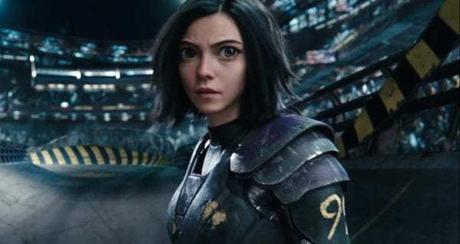
On the plus side, her fight scenes are practical works of art with her defying the laws of physics and limberly executing one killer martial arts movie after another, an obvious bonus for a movie with Battle Angel in the title; on the downside, we ultimately have a rather ugly universe to look at filled with paper-thin characters and a barely told story.
RANDOM PARTING THOUGHTRanking the recent big-budget sci-fi epics from "visionary" directors, from best to worst:
Comments section. Do your thing.
Grew up obsessing over movies and TV shows. Worked in a video store. Minored in film at college because my college didn't offer a film major. Worked in academia for a while. Have been freelance writing and running this blog since 2013. View all posts by Kelly Konda

